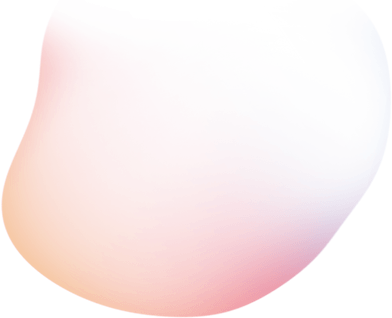Bringing Interior Vision to Life
Bringing Interior Vision to Life
In the world of interior design, translating creative ideas into a clear, tangible vision is one of the biggest challenges. Clients often struggle to fully grasp how color schemes, furniture layouts, textures, and lighting will come together in a space. This is where interior design renderings become invaluable. By leveraging advanced visualization techniques, interior designers can present their concepts with stunning clarity, ensuring clients feel confident in their choices before a single piece of furniture is placed.
High-quality interior design renderings bridge the gap between imagination and reality, allowing designers to communicate their vision effectively while streamlining the approval process. Whether designing a residential home, a commercial office, or a luxury hotel, architectural visualization provides a powerful tool for enhancing presentations, refining design details, and ensuring flawless execution.
The Power of Interior Design Renderings in Modern Design
Interior design is more than just aesthetics—it’s about creating functional, harmonious spaces that enhance the way people live and work. However, explaining design choices to clients who may not have a technical background can be difficult. Interior design renderings eliminate uncertainty by providing photorealistic visuals that showcase every detail, from the texture of upholstery to the way natural light interacts with a space.
Beyond client presentations, visualization also plays a crucial role in material selection, spatial planning, and vendor coordination. By rendering designs in high detail, interior designers can ensure that every element aligns perfectly with the overall concept. This leads to fewer misunderstandings, reduced back-and-forth communication, and a smoother design-to-execution process.
How Interior Design Renderings Enhance the Design Process
Photorealistic Renderings: A True-to-Life Vision of the Final Space
One of the most powerful tools in an interior designer’s arsenal is photorealistic rendering. These high-resolution images depict textures, fabrics, materials, and lighting with remarkable accuracy, making it easier for clients to visualize the finished space. Instead of relying on mood boards and fabric swatches alone, designers can present a fully realized digital version of their concept, allowing clients to see how different elements interact in a cohesive design.
Photorealistic interior design renderings are particularly useful for luxury and high-end projects where every material choice matters. Whether showcasing a marble-clad bathroom, a cozy living room with layered lighting, or a sleek office space with modern finishes, these renderings ensure that clients fully understand the look and feel of their space before committing to costly materials and furnishings.
3D Walkthroughs and Virtual Tours: Immersing Clients in the Design
Static images can only convey so much. For a more immersive experience, 3D walkthroughs and virtual tours allow clients to step inside a design and explore it as if they were physically there. This is especially beneficial for large-scale projects or clients who struggle to visualize spatial relationships from flat images.
With real-time rendering technologies like Unreal Engine and Twinmotion, designers can offer interactive virtual tours where clients can move through spaces, change finishes on the fly, or adjust lighting conditions. This level of engagement fosters better client involvement, making it easier to finalize decisions and reduce design revisions.
Lighting and Mood Studies: Perfecting the Atmosphere
Lighting is one of the most critical elements of interior design. The way natural and artificial light interact with materials can drastically change the ambiance of a space. With advanced interior design renderings, designers can experiment with different lighting setups to determine the best configuration for a room.
For example, a living room may have different lighting needs depending on the time of day or intended use. A rendering can showcase how soft, warm lighting creates a cozy evening atmosphere, while natural daylight enhances a bright, airy feel during the morning. This allows designers to refine their lighting schemes before installation, ensuring the perfect balance of aesthetics and functionality.
Material and Finish Previews: Avoiding Costly Mistakes
One of the most common concerns clients have is how different materials and finishes will look together in a completed space. Interior design renderings provide a realistic preview, helping clients and designers assess color schemes, material combinations, and texture contrasts before finalizing decisions.
For example, a designer working on a kitchen remodel can present multiple countertop and cabinetry options in a rendering, allowing the client to compare them side by side. This eliminates uncertainty and prevents expensive mistakes that could arise from dissatisfaction with real-world selections.
Space Planning and Layout Optimization: Maximizing Functionality
Beyond aesthetics, interior design is about functionality. A beautifully designed space is ineffective if it doesn’t serve the needs of its occupants. Interior design renderings help designers experiment with different layouts, ensuring that furniture placement, traffic flow, and ergonomic considerations are optimized.
For commercial projects, such as office spaces or retail environments, renderings can demonstrate how a layout influences movement and interaction. This enables designers to make informed adjustments, ensuring that spaces are both visually appealing and practical for everyday use.
The Business Benefits of Using Interior Design Renderings
Faster Client Approvals and Fewer Revisions
One of the most time-consuming aspects of interior design is obtaining client approvals. Traditional methods, such as hand-drawn sketches or fabric swatches, often leave room for misinterpretation, leading to multiple revisions and delays. High-quality interior design renderings eliminate this uncertainty, allowing clients to make confident decisions quickly.
When clients can see a realistic representation of their space, they are less likely to request changes later in the process. This not only saves time but also reduces costs associated with last-minute alterations.
Stronger Marketing and Portfolio Presentation
For interior designers looking to attract new clients, a portfolio of stunning interior design renderings is a game-changer. High-quality visualizations make a strong impression, showcasing design expertise in a way that words and sketches cannot.
Renderings can be used in online portfolios, social media marketing, and client proposals, demonstrating a designer’s ability to execute breathtaking spaces with precision and creativity. Whether presenting to potential homeowners or pitching a commercial project to investors, compelling visuals significantly increase the chances of securing new business.
Better Collaboration with Contractors and Vendors
A successful interior design project requires seamless coordination between designers, contractors, and material suppliers. Renderings serve as a visual reference that ensures everyone involved in the project shares the same understanding of the design intent.
Contractors can use interior design renderings to better plan construction and installation, reducing errors and miscommunications. Vendors can use them to source the exact materials needed, preventing discrepancies between what was envisioned and what is delivered. This results in a smoother workflow and a higher likelihood of the project being completed on time and within budget.
Conclusion: Elevating Interior Design with High-Quality Renderings
In a field where presentation and precision are key, interior design renderings have become an indispensable tool for modern interior designers. Whether creating photorealistic visuals, immersive 3D walkthroughs, or detailed material previews, these renderings enhance client communication, streamline the design process, and lead to more successful projects.
For interior designers looking to elevate their work, investing in professional interior design renderings ensures that their creative vision is communicated with clarity and impact. From securing faster approvals to strengthening marketing efforts, high-quality visualizations are the key to delivering exceptional design experiences that clients love.
If you’re ready to transform your design presentations and streamline your workflow, explore how expert interior design renderings can take your projects to the next level.


Discover What We Do and How We Do It
Egestas vitae tortor tempus a mauris egestas sit quis nec. Sem nam interdum sit accumsan tellus.
Proin viverra, ligula sit amet ultrices semper, ligula arcu tristique sapien, a accumsan nisi mauris ac eros
Proin viverra, ligula sit amet ultrices semper, ligula arcu tristique sapien, a accumsan nisi mauris ac eros








